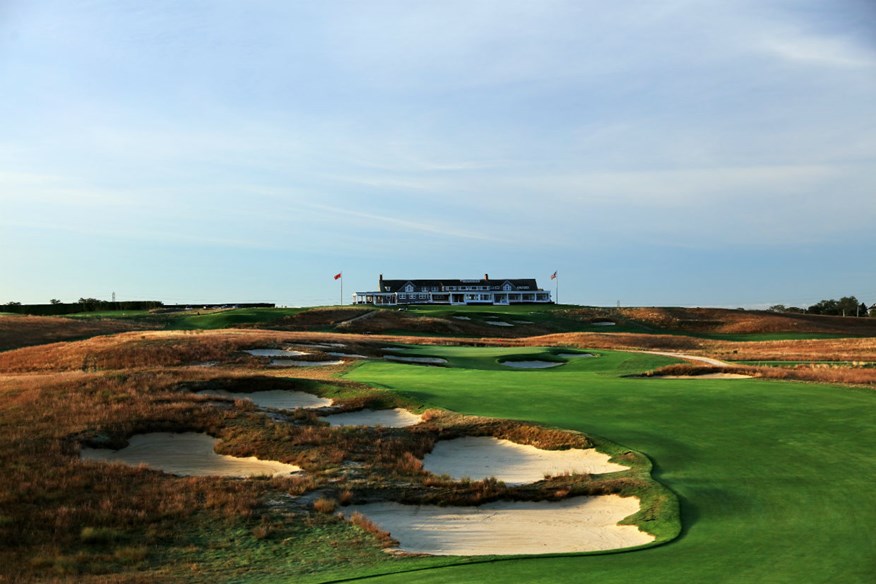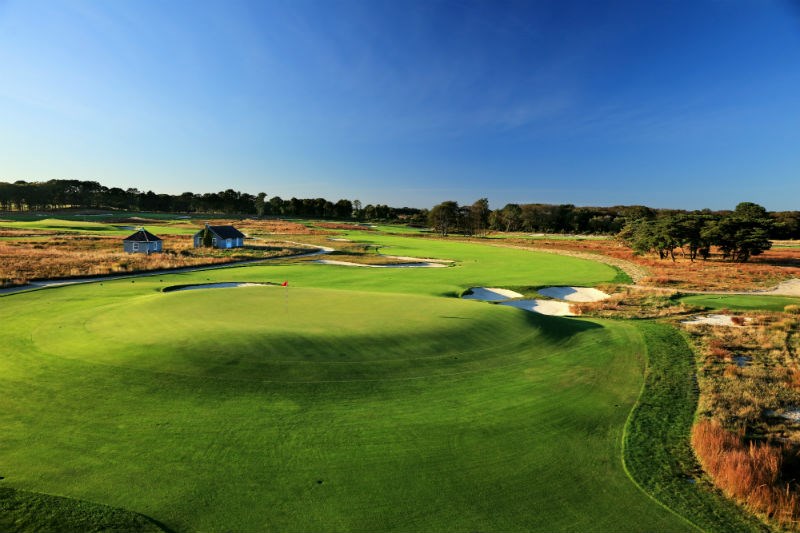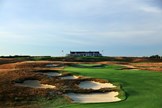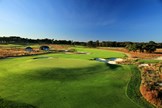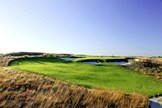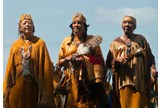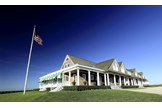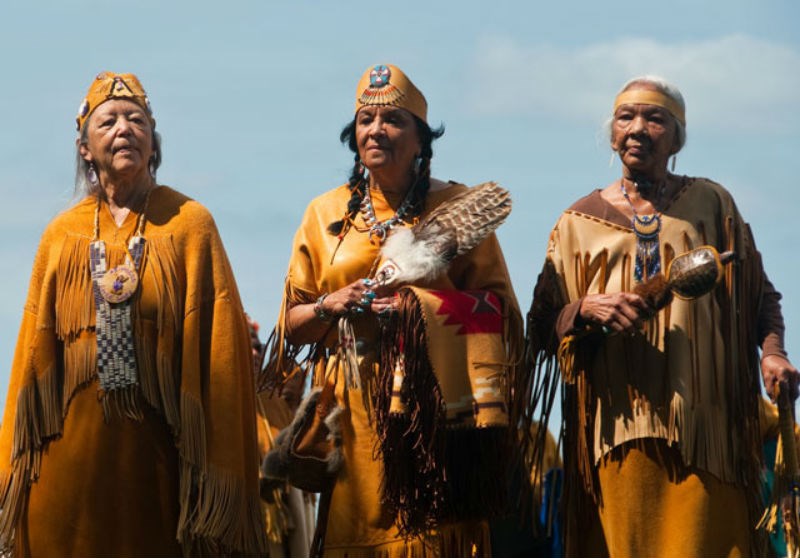The story behind Shinnecock Hills
Last updated:
Beauty & The Beast: The story of Shinnecock Hills is a complicated tale mired in myth and misinformation. Tony Dear heads back 150 years to unravel the story.
When examining the early history of the venerable Shinnecock Hills Golf Club on Long Island, New York, venue for the 118th US Open, the words ‘tangled’ and ‘web’ come quickly to mind. In truth, what century-old story isn’t mired somewhere in confusion and doubt, the result of facts being embellished, forgotten, or perhaps consciously removed or altered to promote a particular narrative or agenda?
In the case of Shinnecock Hills, the somewhat misleading reminiscences of founders and other figures involved with the club in its formative years have made it difficult to say exactly when its first golf course was built, who built it, and even how many holes there were. The members don’t lose any sleep over that. This is a club with no desire to make its particulars known to the wider world.
It would be disingenuous to label this the ‘untold story of Shinnecock Hills’. They may not have sold boat-loads of copies, be known outside a fairly confined circle of golf historians, or even have been made available to the general public, but books on the very private Shinnecock Hills GC do exist.
Its most recent official history is David Goddard’s The History of Shinnecock Hills, published in 1999. An extraordinary volume considered by many the final word on the club’s past, it was able to correct a few inaccuracies from the previous history – written by Golf Digest’s Ross Goodner in 1966 for the club’s 75th anniversary.
Since Goddard’s book was completed, however, archiving has allowed newspapers to store tens of thousands of issues online, giving researchers access to information not easily available before. So while Goodner’s book stated that Willie Dunn built Shinnecock’s first golf course, we can now be fairly certain that wasn’t the case.
It’s easy to see why Goodner thought Dunn was the man. In the September 1934 edition of Golf Illustrated, Dunn penned an article titled ‘Early Courses of the United States’ in which he declared he had designed the course. He described an encounter he’d had with three American visitors in Biarritz – Messrs. Vanderbilt, Mead, and Cryder.
“I remember the first demonstration I gave them,” he wrote. “We chose the famous Chasm hole – about 225 yards and featuring a deep canyon cleared with the tee shot. I teed up several balls and laid them all on the green, close to the flag. Vanderbilt turned to his friends and said, ‘Gentlemen, this beats rifle shooting distance and accuracy’.”
Dunn says the men invited him to America to build them a golf course in the village of Southampton, near New York City. “I arrived in March of 1890, and Vanderbilt took me out to Long Island to the site of the proposed course,” Dunn explained. “The land was rolling and sandy, with thick growths of blueberry bushes in some places. I laid out plans for 12 holes and started work with 150 Indians from the Shinnecock reservation, the only available labor.”
Dunn then described the course and its design in great detail, at one point saying the land was “dotted with Indian burial mounds”, which he “left as bunkers in front of the holes”. The club’s first members, he recalled, were a group of New Yorkers: “General Thomas H. Barber was the president, and Samuel L. Parrish, the first secretary.” Parrish, a lawyer from Philadelphia who had moved north to New York in 1877 and become a very active member of the community in Southampton, also identified Dunn as the club’s first designer. In 1923 or thereabouts, the President of Shinnecock Hills GC – De Lancey Kountze – asked Parrish for his recollections of the origins of golf in America, and specifically Shinnecock Hills.
Parrish, then in his early 70s, claimed he had received a letter in 1891 from his friend Edward Mead who was visiting Biarritz, describing this game called golf which might be “successfully introduced at Southampton, and played possibly on the Shinnecock Hills”. When they met back in Southampton that summer, Mead communicated his enthusiasm for the game so convincingly that they asked another friend – railroad lawyer Charles Atterbury – to visit the Royal Montreal GC while he was in Canada on business to connect with the club’s officials with a view to bringing their club professional to Southampton and laying out a course.
The meeting was mentioned in the book Golf in Canada, written by Royal Montreal’s secretary J. Hutton Balfour. “The next request we had was from several gentlemen in Long Island, New York, that we would permit our professional to go there for a month to lay out a green and instruct them; this we gladly did”.
As the result of this interview, Parrish wrote, “the Scotch-Canadian professional, Willie Dunn by name, arrived at Southampton with clubs and balls in the early part of July, 1891, consigned to me.”
The pair drove out to Shinnecock to view the site. Parrish says Dunn was unimpressed with the land and remarked that “no golf course could be built on land of that character”. As they turned to leave, Parrish asked Dunn what sort of land would be suitable, to which he replied “ground capable of being turned into some sort of turf was necessary”. Parrish, very familiar with the 4,000 acres of the Shinnecock Hills, having ridden horses and cycled all over them, knew a spot with sandy soil that might work. Showing it to Dunn, the professional seemed to agree, teeing up a ball for Parrish to hit. Struck solidly over the railroad tracks, it was the first shot ever struck at Shinnecock.
He related his experience to Mead and together they, along with others who had become quickly enamoured with hitting a ball with a stick, pledged to raise sufficient money for the course and a clubhouse.
Build And They Will Come
On September 5, 1891, the club purchased 75 to 80 acres of land – on which the course had already been laid out – from the Long Island Improvement Co. for $2,500. Two days later, with interest in club membership having far exceeded expectations, it was decided to proceed with plans for a clubhouse far larger than originally planned – the new building designed by the architect Stanford White (see sidebar). Parrish noted the original course, ‘as laid out by Willie Dunn in the summer of 1891’, consisted of 12 holes.
So Parrish and Dunn both stated in writing that Dunn had built the club’s first 12 holes in July 1891. But how could this be? For starters Dunn wasn’t the pro at Royal Montreal when Charles Atterbury visited in June 1891. In fact, Dunn was never the pro at Montreal.
Dunn also said it was WK Vanderbilt who first showed him the site when numerous reports show it was Parrish, and you probably noticed the conflicting dates surrounding Dunn’s arrival in Southampton. In his 1934 Golf Illustrated article, the Scotsman said he was there in March of 1890. Parrish says he turned up in July 1891. However, newspaper reports don’t make any mention of Dunn in America until 1893 and David Goddard has him in Southampton in 1894. Los Angeles-based researcher David Moriarty, a semi-retired attorney whose hobby it is examining golf club archives, says no travel manifest for a Willie Dunn travelling from Britain of France to America prior to 1893 has been found.
And The Golf Book of East Lothian, written by the apparently fastidious Reverend John Kerr and published in 1896, states that: “He (Dunn) left England for America in 1893, to act as professional to Shinnecock Golf Club, the most important among the new clubs started in America.” Moriarty says he found no indication whatsoever that Dunn arrived in America before 1893. He believes Dunn may have embellished the truth and that Parrish may simply have been confused.
It is far more likely, then, that Willie Davis laid out Shinnecock’s first rudimentary holes. A New York Times article from March 8, 1896 recounts the story of Parrish’s first meeting with Davis. Insert the name Davis for Dunn and it reads much the same as Parrish’s own recollections. Parrish told the author of the Herald report that he had anxiously asked Davis what he thought. “With a sad voice and troubled look, Willie Davis replied, ‘Well Sir, I don’t think you can make golf links out of this sort of thing’.” When they moved to an entirely different area of the Shinnecock Hills, Davis’ eyes apparently widened and he said “Yes, this is much more like it.”
A New York Times article from March 1896 also lists Davis as the creator of Shinnecock’s first course, as does the club’s own website. In fact, the club makes no mention of Dunn at all in its historical overview, even though Dunn certainly played a major role in the development of the golf course after Davis’ initial effort.
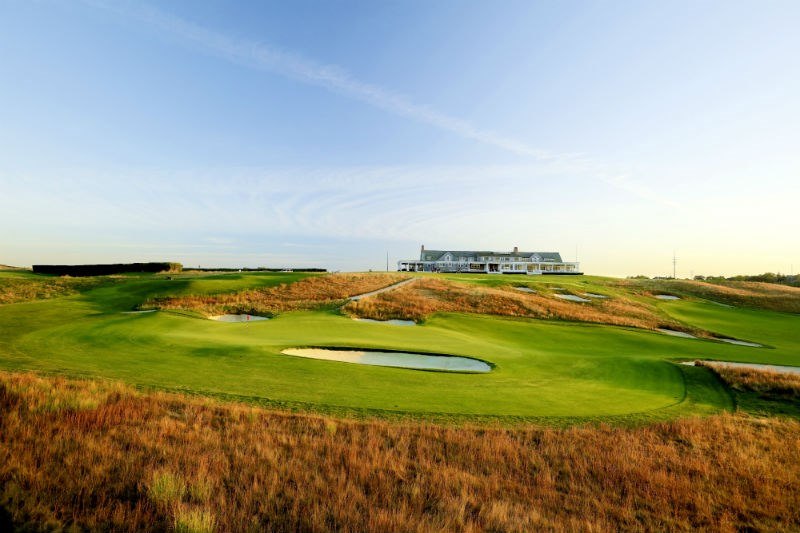
The Doubted Dozen
Uncertainty over who created Shinnecock Hills is matched by uncertainty over how many holes he first created.
The club’s website says, “The original twelve-hole golf course was designed by Willie Davis”, while Golf Digest says, “The original 12- hole course of Shinnecock Hills was designed in 1891 by Willie Davis.” David Goddard said it was 12 in The Story of Shinnecock Hills, as did Samuel Parrish.
Yet David Moriarty’s exhaustive research suggests they were all out by three. “W.D. Davis came to Southampton in July 1891,” he wrote. “While in Southampton, he gave lessons and laid out two golf courses (men’s and ladies’).” Moriarty’s source was a New York Herald article dated August 30, 1891, which includes a diagram of the layout clearly showing nine holes. So why do so many people cling to the notion that the first course at Shinnecock Hills had 12 holes? “It’s hard to say,” says Moriarty now, “but I assume it’s because of what Samuel Parrish wrote in 1923 and what Willie Dunn claimed in 1934. When Dunn said he built the 12-hole course, which is true, he failed to mention Davis’ nine-hole layout was already there.”
There is no doubt that the original course in 1891 was nine holes, Moriarty insists. “And in addition to the map, the author of the Herald article describes playing the nine holes with Davis present. There are press accounts from 1892 which also list a nine-hole course. The first evidence of the 12-hole course comes in 1893.” So why does the 12-hole story persist? “Old legends tend to linger,” says Moriarty. “Or maybe no one cares enough to bother to correct it.” Shortly after laying out those first nine holes, Davis created a nine-hole ladies course. In Golf in Canada, J. Hutton Balfour noted a “good eighteen holes have been laid out” at Shinnecock, nine for the men, nine for ladies. If true, it follows that Shinnecock Hills was the first golf club in the United States with 18 holes, even if they weren’t all part of the same course.
BUILDING BIG BEN
Evidence suggests Willie Dunn first set foot in Southampton in the spring of 1893, by which time members of the club formed in August 1891 had been playing over Willie Davis’ layouts for more than 18 months. Davis is thought to have remained at Shinnecock for five weeks then returned to Montreal before reappearing in the US in November 1892, in Newport, Rhode Island. There he laid out nine holes for the Newport Country Club which was one of the five clubs – Shinnecock Hills, Saint Andrew’s in Yonkers, Chicago and the Country Club in suburban Boston the others – that formed the Amateur Golf Association in December 1894, becoming the United States Golf Association soon after.
It is thought Dunn was hired primarily as a greenkeeper and instructor, but he is also believed to have developed Davis’ layout, adding three holes to form the 12-hole course many still believe was Shinnecock’s first. It was the ‘White Course’, the ladies’ called ‘The Red’.
It is only now that historians seem to collectively acknowledge it was Dunn who turned those 12 holes into 18 during the spring of 1895, when he also replaced The Red with another nine-hole ladies course well to the north of its original location. “The Shinnecock Hills Club has two courses,” reported the New York Post in June 1895, “a nine-hole links near the clubhouse on which the play is chiefly in the open and which is used by the women, and the ‘White Course’ – a playful allusion to the outcropping sand bunkers, which is for the men.”
The White Course had 18 holes, the new six having been added in the spring, so as to bring ‘Ben Nevis’ into play. This point was the highest of the Shinnecock Hills and named after Scotland’s highest mountain. “The hole (9th) is on the very top of Ben Nevis,” the Post reported, “and as a reward for the uphill struggle to reach it… the player has a glorious panorama of the dark and deep blue ocean and, on the land side, the silvery waters of the bay backed by the green clad hills.”
Shinnecock Hills now enjoyed a decade of relative peace and prosperity, but it felt forced to update the course in 1916. Concerns remained over part of the layout still located on the south side of the Long Island Railroad, and a look at the 1895 map of Dunn’s 18-hole course shows the routing really wasn’t terribly exciting. A bigger concern though was the arrival of another golf club immediately to the north. National Golf Links of America (NGLA) opened in 1910 and was designed by Charles Blair Macdonald who grew up in Chicago, attended St. Andrews University, took lessons from Old Tom Morris and became a stockbroker on his return to the US. He formed the Chicago Golf Club in 1892 before relocating to New York in 1900, working on Wall Street, playing golf whenever possible and making annual trips to Europe to play and study the great courses.
Macdonald was determined to find suitable land on which to build his own masterpiece featuring all the best characteristics of courses he’d played in Britain. He wanted sandy soil and enough movement in the ground to ensure interesting play, and scoured Long Island for his dream patch. In 1906, he settled on property adjacent to Shinnecock Hills. Seventy friends put in $1,000 to become founding members and enable him to purchase the land and build the course.
The area in question had been under consideration for several years by Shinnecock members who wanted to develop it. They’d had very little success however, and following the 1907 ‘Bankers’ Panic’ in which the New York Stock Exchange plummeted by almost 50 percent from its 1906 peak, there was a feeling among Shinnecock members that Macdonald’s plan was ill-fated.
Interestingly, Macdonald himself was a member at Shinnecock Hills and must have been privy to his fellow members’ pessimism regarding his project next door. In his biography of Macdonald – The Evangelist of Golf – author George Bahto mentions a lunch at Shinnecock Hills hosted by Macdonald at which a few of his friends were present. Apparently, as Macdonald was exclaiming the virtues of the land and design at NGLA, one of his guests had to leave the table as he was close to tears, believing his friend’s grand plan was doomed to fail. But National Golf Links of America was a roaring success.
In a 1999 interview, Bahto said the course was vastly superior to Shinnecock Hills. “After NGLA opened, Shinnecock paled by comparison – in routing, design, and length,” he said. “It had no weak links, and was a major move away from penal architecture with a wonderful mix of strategic and heroic golf.”
You might think that when Shinnecock Hills decided to update its Dunn-designed course, it would have been disinclined to approach Macdonald, and that such an exchange would have been excruciating for the club. Bahto saw it differently. “Charlie (Macdonald) was a member at Shinnecock, and it was only natural that he was asked to redesign the course,” he said.
Macdonald worked closely with his protégé Seth Raynor, using new land to the northwest of the existing course and building a par 70 of 6,108 yards. Included were the template holes Macdonald modelled on great holes he’d played on his trips to Britain and Europe and which he deemed to have architectural merit. He and Raynor had built many of them at NGLA. At Shinnecock, where five of Dunn’s holes were retained, there was a version of the Old Course’s Road Hole, and the four par 3s were all adaptations of Macdonald’s favoured short holes – ‘Short’ (inspired by the then 5th at Brancaster in Norfolk), ‘Eden’ (11th on the Old Course), ‘Biarritz’ (a feature at Biarritz le Phare in France on a hole that was lost decades ago), and Redan (15th at North Berwick).
The redesign was well received and, somewhat unexpectedly, the neighbouring clubs actually enjoyed a cordial relationship with Shinnecock opening its facilities to NGLA members before the new course had its own clubhouse, and the two sharing a professional/greenkeeper during the first world war.
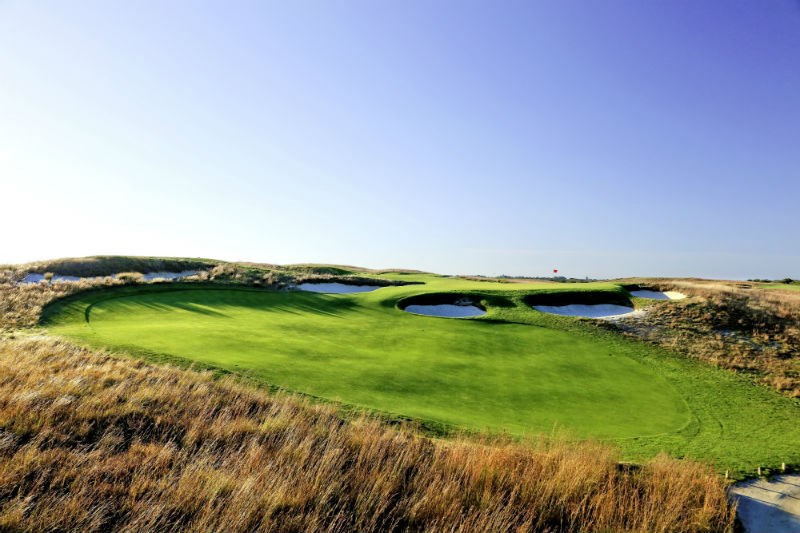
THE NATURE FAKER
Macdonald and Raynor’s Shinnecock course lasted a dozen years before, in 1928, the New York State Route 27 was routed through the course’s southern holes. The President of the club at the time was Lucien Tyng, a nancier and public utilities executive, who bought a substantial chunk of land to the east of the clubhouse on which to build new holes that he chose William Flynn to design.
Flynn was a very highly-regarded golf course architect who had played significant roles in the creation of Pine Valley and Merion GC’s famous East Course in suburban Philadelphia. Tyng most probably knew of Flynn through nance and utilities connections, and had heard that not only was he a talented designer but that he also knew more about agronomy and turfgrass than any other architect around at the time.
When looking into his work at Shinnecock, or anywhere for that matter, it’s a good idea to talk with Wayne Morrison, a largely unchallenged Flynn expert who, since 2000, has been gathering a trove of maps, essays, diagrams, photographs and manuscripts – a 2,500- page work he has titled The Nature Faker. Morrison says Flynn’s routing of Shinnecock Hills was far more sophisticated than Macdonald’s, taking into account summer and winter’s opposite prevailing winds, and utilising a routing concept he called ‘triangulation’. “Flynn used triangulation on 10 holes in three separate sets – 5th-7th, 10th-13th and 14th-16th,” he says (the holes were numbered differently at the time, as the nines were later reversed), and he made much more interesting use of doglegs. Flynn was master at routing courses.”
While Flynn designed the new course on which he retained only three of Macdonald’s holes – the 3rd, the 7th (the famous Redan), and the 9th – his business partner Howard Toomey built it, along with young associates Dick Wilson, Robert ‘Red’ Lawrence and William Gordon. The quality of Flynn’s design has allowed Shinnecock Hills to remain largely unaltered since the early 1930s. Of course, minor changes have occurred and a major restoration, led by Morrison and his colleague Tom Paul, has been ongoing since 2005, since when much of Flynn’s strategy has been bought back and his greens expanded to their original sizes. Bill Coore and Ben Crenshaw also contributed to that restoration which is now supervised by the course’s superintendent, Jon Jennings, who worked at Chicago GC for 12 years before coming to Shinnecock Hills six years ago.
A major part of preparation for this year’s US Open happened last September when seven acres of turf from the edges of the fairways were rolled up and trucked away before being substituted by fescue from the club’s tiny par 3 course. “Our fairway turf is comprised of poa, ryegrass and bentgrass,” says Jennings. “When it grows above an inch, it is too dense (think unplayable) and doesn’t provide the playing or visual experience we desired. Fescue is the existing grass beyond the mowed rough and we wanted to have that be the turf framing each hole.
“The club and the USGA want the course to play as close to Flynn’s ideal as possible – wider than in recent years and more strategic,” he adds. “We did narrow some fairways and put in the fescue rough to put a greater emphasis on accuracy, but they’ll still be some of the widest fairways – 35-40 yards – ever at a US Open.”
Wayne Morrison’s hope now is that when the 118th US Open arrives, William Flynn’s magnificent, enduring design will get the recognition it deserves. “We want everyone that visits the US Open, or watches on TV, to appreciate the golf club’s efforts to restore the work of one of the game’s best architects on one of the world’s great courses.”
SHINNECOCK VERSUS THE SHINNECOCKS
— How Native Americans fought Shinnecock Hills for their hallowed ground.
In June 2005, the Shinnecock Indian Nation, members of which had helped build Shinnecock Hills GC 114 years before, led a lawsuit in Federal Court claiming ownership of thousands of acres of prime Long Island property it said had been wrongfully taken from them in 1859. Centred around the town of Southampton, the 3,600 acres in question were worth billions of dollars as they covered some of the most expensive real estate in the US, including the land on which the golf course sat.
Filed in the United States District Court in Central Islip against the State of New York, Suffolk County, and the Incorporated Village of Southampton, the suit claimed the land had been granted to the Shinnecocks on a 1,000-year lease but that they had been stripped of it after white residents forged a petition effectively breaking the lease and enabling them to develop the land and build a railroad.
The legal battle lasted 10 years, with the Tribe ultimately losing their bid in October 2015 when the US Court of Appeals in Manhattan upheld the District Court’s ruling dismissing the case.
The only option left open to the Tribe was to appeal to the Supreme Court, which it did in April, 2016. Three months later, however, the Supreme Court rejected the appeal to review the Court’s decision.
About 500 Shinnecocks live on the 800-acre reservation a mile and a half south of the golf course.
THE WHITE HOUSE
— The story behind one of American golf’s most iconic clubhouses.

The man who designed Shinnecock Hills’ elegant, shingle-style clubhouse was Stanford White. Born in New York in 1953, White never trained as an architect but rode his passion for the discipline to a plum job working for the celebrated architect Henry Richardson. He later crossed the Atlantic to study the great architectural styles of Europe. On his return to the US, he joined forces with Charles McKim and William Mead.
Something of a bon viveur, White is said to have been a member of some 50 New York social clubs at one point. A friend of the rich and famous, he was the mansion designer of choice for the über wealthy in New York and the Hamptons on Long Island. White also designed several great monuments and public buildings, including the Washington Square Arch, the second iteration of Madison Square Garden and Grand Central Station.
White’s lust for life was part of his persona but in 1906 his past indiscretions caught up with him when the jealous husband of a woman he had seduced when she was 16 shot and killed him during a performance of Mam’zelle Champagne at Madison Square Garden. White’s reputation took a beating as his dirty laundry was aired during the murder trial but he remains a notable figure as the man who designed America’s first, and perhaps its nest, clubhouse.
